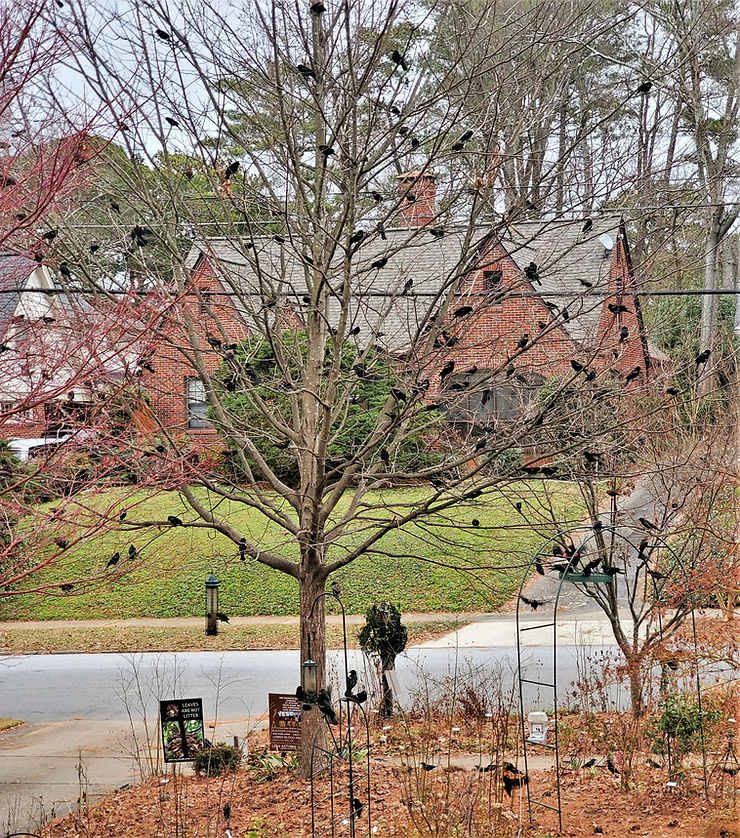I don’t want to be the reason a bird gets sick or even dies so I’m diligent about keeping my bird feeders clean. A dirty feeder can host bacteria, mold, and diseases from bird poop or spoiled seeds and hulls. An infection like salmonellosis can spread to all birds visiting the feeder and even entire bird colonies.

The Audubon Society recommends cleaning feeders once or twice a month. I clean mine twice a month May through September. I shoot for once a month from October through April, but in reality, I clean them every other week when we have a rainy spells as dampness increases the likelihood of moldy seeds. When the feeders are alive with tons of birds during migration season and there’s a better chance a sick bird could spread disease, I also clean every other week.

The easiest way to make sure I don’t forget to at least clean my feeders once a month is to put a reminder on my calendar for the first of the month - which happens to be today. If you let gunk build up on your feeders or let seeds decompose you could be harming the birds you’re trying to help and the cleaning becomes a major chore, not a routine task. There’s no right way to clean the feeders but the most reliable sources suggest emptying, disassembling, soaking, scrubbing, bleaching and drying the feeders. This is my routine for doing these things. I would also suggest wearing gloves when cleaning feeders since you’re dealing with contaminates that at best are just plain gross. Empty the Feeders A few days before cleaning the feeders, I let the seeds run down a bit. If it’s been rainy and the seeds are starting to clump which always leads to mold, I put them in a bag and throw them out in the trash. If the seeds are dry and look fine, I scatter them to give my squirrel friends a big treat. I use no-waste birdseed mix so any dropped seeds get quickly eaten and I don’t have to worry about the dreaded three letter R rodents setting up shop near my house. I welcome the chipmunks, squirrels, and other wildlife seed scavengers in my yard.

Disassemble the Feeders Taking the feeders apart as much as possible ensures all the parts gets a thorough cleaning. I find it worth the investment to buy high quality feeders which can cost less in the long run because they’re more likely to easily come apart for cleaning and they have replacement parts if any become damaged. I also buy metal or recycled plastic feeders which last longer. I went through two wooden platform feeders that basically disintegrated before I realized I needed to buy the recycled plastic ones.
Soak the Feeders I use a dishpan filled with dish detergent and hot soapy water to soak the feeder pieces to make it easier to scrub off particles. They don’t need to be soaked very long – about 20 to 30 minutes. Scrub the Feeders Cornell’s Project Feederwatch determined gently scrubbing debris off is essential because if debris is left on a clean feeder it makes it an easier host for harmful diseases. After soaking, I use my “bird” bottle brush, old toothbrush, and sponge that I’ve set aside just for this task to lightly scrub the feeder so there’s no debris or particles still attached. Hard scrubbing is not necessary if the feeder is routinely cleaned. I once ambitiously used a stainless-steel scrubbing pad and took the paint off the metal part of a platform feeder! Bleach the Feeders The Project Feederwatch study also concluded that using a bleach solution to sanitize the feeder is better than just using dish soap as the best way to make sure the feeder is free from disease. Once the feeder is clean, I soak it in a weak bleach solution of 1 part bleach to 9 or 10 parts water for a few minutes. From experience, I also learned that like scrubbing, soaking something in bleach needs to be done with care. I’m a bit more than compulsive and once in my overzealous effort to clean an old but high-quality feeder I found at an estate sale, I soaked it overnight and messed up the paint.
**Alternatively, the feeder pieces can be put in the dishwasher instead of soaking, scrubbing and bleaching them.
Dry the Feeders
I leave the feeders out in the sun for a day or even two so they’re completely dry before refilling them. If feeders aren’t dry, they could make the seeds moldy.

Reassemble and Refill the Feeders
Birds notice a clean feeder with fresh seeds - within an hour of putting mine out, birds always appear!

On a final note, if you decide to put up a bird feeder, realistically assess whether you have the time and commitment to keep it full and clean. There's zero harm if you decide it's not for you, but real damage can happen to our fragile bird population if your feeder is not a healthy food source.



.jpg)

